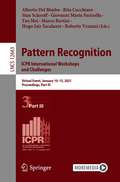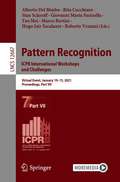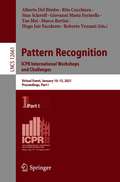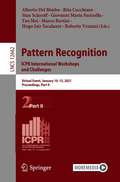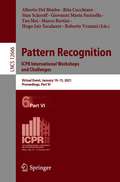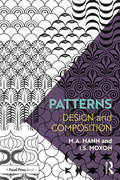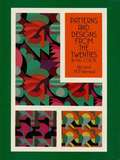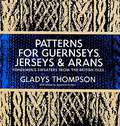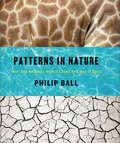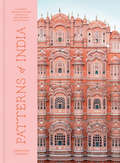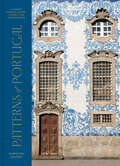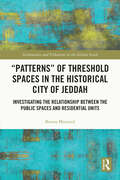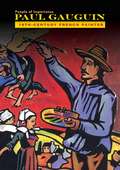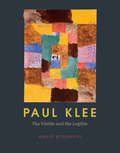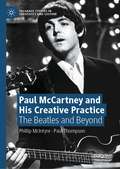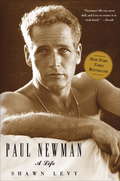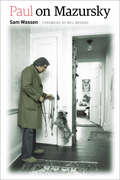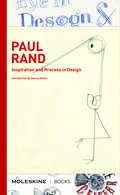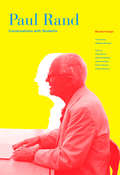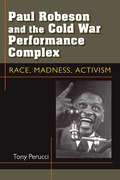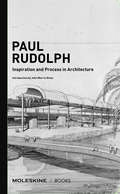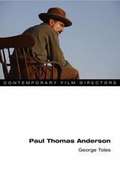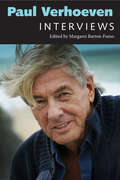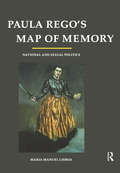- Table View
- List View
Pattern Recognition. ICPR International Workshops and Challenges: Virtual Event, January 10–15, 2021, Proceedings, Part III (Lecture Notes in Computer Science #12663)
by Alberto Del Bimbo Rita Cucchiara Stan Sclaroff Giovanni Maria Farinella Tao Mei Marco Bertini Hugo Jair Escalante Roberto VezzaniThis 8-volumes set constitutes the refereed of the 25th International Conference on Pattern Recognition Workshops, ICPR 2020, held virtually in Milan, Italy and rescheduled to January 10 - 11, 2021 due to Covid-19 pandemic. The 416 full papers presented in these 8 volumes were carefully reviewed and selected from about 700 submissions. The 46 workshops cover a wide range of areas including machine learning, pattern analysis, healthcare, human behavior, environment, surveillance, forensics and biometrics, robotics and egovision, cultural heritage and document analysis, retrieval, and women at ICPR2020.
Pattern Recognition. ICPR International Workshops and Challenges: Virtual Event, January 10-15, 2021, Proceedings, Part VII (Lecture Notes in Computer Science #12667)
by Alberto Del Bimbo Rita Cucchiara Stan Sclaroff Giovanni Maria Farinella Tao Mei Marco Bertini Hugo Jair Escalante Roberto VezzaniThis 8-volumes set constitutes the refereed of the 25th International Conference on Pattern Recognition Workshops, ICPR 2020, held virtually in Milan, Italy and rescheduled to January 10 - 11, 2021 due to Covid-19 pandemic. The 416 full papers presented in these 8 volumes were carefully reviewed and selected from about 700 submissions. The 46 workshops cover a wide range of areas including machine learning, pattern analysis, healthcare, human behavior, environment, surveillance, forensics and biometrics, robotics and egovision, cultural heritage and document analysis, retrieval, and women at ICPR2020.
Pattern Recognition. ICPR International Workshops and Challenges: Virtual Event, January 10–15, 2021, Proceedings, Part I (Lecture Notes in Computer Science #12661)
by Alberto Del Bimbo Rita Cucchiara Stan Sclaroff Giovanni Maria Farinella Tao Mei Marco Bertini Hugo Jair Escalante Roberto VezzaniThis 8-volumes set constitutes the refereed of the 25th International Conference on Pattern Recognition Workshops, ICPR 2020, held virtually in Milan, Italy and rescheduled to January 10 - 11, 2021 due to Covid-19 pandemic. The 416 full papers presented in these 8 volumes were carefully reviewed and selected from about 700 submissions. The 46 workshops cover a wide range of areas including machine learning, pattern analysis, healthcare, human behavior, environment, surveillance, forensics and biometrics, robotics and egovision, cultural heritage and document analysis, retrieval, and women at ICPR2020.
Pattern Recognition. ICPR International Workshops and Challenges: Virtual Event, January 10–15, 2021, Proceedings, Part II (Lecture Notes in Computer Science #12662)
by Alberto Del Bimbo Rita Cucchiara Stan Sclaroff Giovanni Maria Farinella Tao Mei Marco Bertini Hugo Jair Escalante Roberto VezzaniThis 8-volumes set constitutes the refereed of the 25th International Conference on Pattern Recognition Workshops, ICPR 2020, held virtually in Milan, Italy and rescheduled to January 10 - 11, 2021 due to Covid-19 pandemic. The 416 full papers presented in these 8 volumes were carefully reviewed and selected from about 700 submissions. The 46 workshops cover a wide range of areas including machine learning, pattern analysis, healthcare, human behavior, environment, surveillance, forensics and biometrics, robotics and egovision, cultural heritage and document analysis, retrieval, and women at ICPR2020.
Pattern Recognition. ICPR International Workshops and Challenges: Virtual Event, January 10–15, 2021, Proceedings, Part VI (Lecture Notes in Computer Science #12666)
by Alberto Del Bimbo Rita Cucchiara Stan Sclaroff Giovanni Maria Farinella Tao Mei Marco Bertini Hugo Jair Escalante Roberto VezzaniThis 8-volumes set constitutes the refereed of the 25th International Conference on Pattern Recognition Workshops, ICPR 2020, held virtually in Milan, Italy and rescheduled to January 10 - 11, 2021 due to Covid-19 pandemic. The 416 full papers presented in these 8 volumes were carefully reviewed and selected from about 700 submissions. The 46 workshops cover a wide range of areas including machine learning, pattern analysis, healthcare, human behavior, environment, surveillance, forensics and biometrics, robotics and egovision, cultural heritage and document analysis, retrieval, and women at ICPR2020.
Patterns: Design and Composition (Textile Progress Ser. #Vol. 22, No. 1)
by M.A Hann I.S. MoxonIn Patterns: Design and Composition, M. A. Hann and I. S. Moxon present guidelines for the original design and composition of regular patterns alongside an understanding of the inherent structures of these patterns. Starting with the compositional elements, Hann and Moxon take the reader through patterns in the environment, early forms of patterns and aspects of classification based on circles, squares, triangles and symmetry. With 250 images sourced from past examples as well as student work, this essential read for design students and researchers demonstrates how simplicity begets complexity in the design and composition of regular patterns.
Patterns and Designs from the Twenties in Full Color
by Ad. VerneuilReprinted in full color from a rare portfolio of abstract design published in Paris in the 1920s, these images splendidly capture the emergence of the Art Deco aesthetic in the years following World War I. The work of two notable French illustrators, this rich kaleidoscope of arcs and angles represents a transitional period between the luxuriant curvilinear designs of Art Nouveau and the streamlined modernism of Art Deco.Deeply influenced by Cubism, Neo-Impressionism, and other modernist movements, the Verneuils created a dazzling series of designs that reflect the spirit of these dynamic movements and the developing sensibilities of Art Deco design. Wallpaper and textile designers, graphic designers, and others in the arts and crafts will find pleasure and inspiration on every page of this handsome book. The collection includes 87 designs in a variety of useful shapes and sizes, each faithfully reproduced and copyright-free.
Patterns for Guernseys, Jerseys & Arans
by Gladys ThompsonFor hundreds of years the fishermen of the British Isles have gone to the sea wearing Guernsey and Jersey sweaters. Among landlubbers as well, these sweaters are perennially popular, but, especially in this country, it is often hard to find practical instructions for the patterns that are traditional in Britain. Here is a book that presents fully 82 different genuine folk patterns for both the lighter weight Jerseys and the heavier Guernseys, and diagrams many more patterns that you can use in your knitting. The author gives the names of the stitches and patterns traditionally used in making Jerseys and Guernseys, and she tells you exactly how to knit every sweater in this book using those patterns and stitches. Here you will find patterns taken from sweaters found in Yorkshire, Norfolk, the west coast of Ireland, the Scottish Hebrides, and the Aran Islands. These are sweaters that have often been handed down from father to son for several generations, they wear so well. Instructions for these sturdy sweaters are given row by row for knitting fronts, backs, sleeves, and necks, in the traditional fashion. Each set of instructions is accompanied by a diagram of the pattern and, often, by a photograph of the finished sweater. All of these sweaters can be worn by either men or women, but the author has also provided full directions for making two sets of sweaters and cardigans expressly adapted for ladies' wear. Mrs. Thompson also includes interesting information about the people who gave her the patterns for this book.
Patterns in Nature: Why the Natural World Looks the Way It Does
by Philip BallThough at first glance the natural world may appear overwhelming in its diversity and complexity, there are regularities running through it, from the hexagons of a honeycomb to the spirals of a seashell and the branching veins of a leaf. Revealing the order at the foundation of the seemingly chaotic natural world, Patterns in Nature explores not only the math and science but also the beauty and artistry behind nature's awe-inspiring designs. Unlike the patterns we create in technology, architecture, and art, natural patterns are formed spontaneously from the forces that act in the physical world. Very often the same types of pattern and form - spirals, stripes, branches, and fractals, say--recur in places that seem to have nothing in common, as when the markings of a zebra mimic the ripples in windblown sand. That's because, as Patterns in Nature shows, at the most basic level these patterns can often be described using the same mathematical and physical principles: there is a surprising underlying unity in the kaleidoscope of the natural world. Richly illustrated with 250 color photographs and anchored by accessible and insightful chapters by esteemed science writer Philip Ball, Patterns in Nature reveals the organization at work in vast and ancient forests, powerful rivers, massing clouds, and coastlines carved out by the sea. By exploring similarities such as those between a snail shell and the swirling stars of a galaxy, or the branches of a tree and those of a river network, this spectacular visual tour conveys the wonder, beauty, and richness of natural pattern formation.
Patterns of India: A Journey Through Colors, Textiles, and the Vibrancy of Rajasthan
by Christine ChitnisIt's the trip of a lifetime--a textile-based tour of colorful Rajasthan, India featuring more than 200 lush photographs depicting everyday life in one of the most vibrant regions in the world.Patterns of India is a visual experience that offers intimate insights into the diverse and richly hued Western Indian culture. Color is the thread that binds the vast country together, defining every aspect of life from religion and politics to food and dress. Organized by the five dominant colors royal blue, sandstone, marigold, ivory, and rose, this book explores how deeply color and pattern exist in a symbiotic relationship and are woven into every part of the culture. For instance, the fuchsia found in the draping fabric of a sari is matched by the vibrant chains of roses offered at temple, and the burnt orange spices in the marketplaces are reflected in the henna tattoos given to brides and wedding guests. While every color is imbued with meaning, it is often within the details of patterns that the full story comes to light. Photographer and writer Christine Chitnis spent over a decade traveling through, getting to know, and falling in love with the intricate patterns of everyday Rajasthani life. With history and culture-based essays woven throughout the more than 200 stunning photographs of architecture, markets, cuisine, art, textiles, and everyday goings-on, Patterns of India captures the beauty and essence of this unique part of the world.
Patterns of Portugal: A Journey Through Colors, History, Tiles, and Architecture
by Christine ChitnisA vibrant tour of Portugal, featuring more than 200 photographs that bring to life one of the most beautiful countries in the world.In this gorgeous book, writer and photographer Christine Chitnis invites you to celebrate the unique, timeless beauty of Portugal through the stunning designs and hues that define Portugal&’s countryside, coast, small towns, and cosmopolitan cities.This collection features over 200 stunning photographs that illustrate the ways that color and pattern are woven into the very fabric of the country&’s culture, history, architecture, and traditions. Each section features insightful essays that explore the artistry of azulejos, the colorful ceramic tiles covering much of Portugal's architecture; the intricately embroidered details of traditional lavradeira costumes; the rich flavors of Portuguese cuisine, and so much more.Throughout these vibrant pages, you&’ll discover the vivid stories behind each color and pattern, transporting you to the gorgeous fields of Alentejo, the sparkling waters of the Algarve, the busy streets of Lisbon, the lush valleys of the Douro, and beyond.
“Patterns” of Threshold Spaces in the Historical City of Jeddah: Investigating the Relationship Between the Public Spaces and Residential Units (Architecture and Urbanism in the Global South)
by Basma Massoud“Patterns” of Threshold Spaces in the Historical City of Jeddah explores the meaning of threshold spaces and investigates the relationship between the public spaces and residential units in the historical city of Jeddah, Saudi Arabia, while at the same time revisiting Christopher Alexander’s theory in his canonical 1977 book, A Pattern Language. This book questions and analyses “patterns” relating to the cultural, social, and environmental particularities of Jeddah, with special attention paid to the effect of gender segregation in the city’s urban configuration. It discusses the extension that has been undertaken through testing a concept from the urban design theory of the West (the United States and Canada) and applying it to an Islamic city to find patterns in four different scales, which form the basis of the investigation (body, building, street, and city). Empirical methods have been used in the context of historical Jeddah, through which patterns are investigated using different approaches for the different scales. The book aims to explore the meaning of threshold spaces in old Jeddah. Furthermore, it shows that there are eighteen patterns of threshold spaces in the old town: patterns that are solely related to this specific case study, as well as modified patterns to the ones explored by Christopher Alexander. This book shall allow not only a better understanding of the relationship between housing and the historical city but also an exploration of the role of the threshold space in shaping the old city of Jeddah. It will be of interest to researchers, students of architecture, urban planning and anthropology studies, and people involved in cultural heritage, both academics and practitioners.
Paul Gauguin: 19th-Century French Painter
by Diane CookFrench painter Paul Gauguin may not have been appreciated while he was alive, but his work later inspired many of the world's most famous artists, including Pablo Picasso. In the century since his death, Gauguin's work has become better known and more respected. He is famous for his use of color and unique style. Gauguin's work set him apart from other French painters of his time and helped to establish the style of Symbolism. Learn the story of one of the most influential artists of all time in Paul Gauguin: 18th-Century French Painter.
Paul Klee: The Visible and the Legible
by Annie BourneufThe fact that Paul Klee (1879-1940) consistently intertwined the visual and the verbal in his art has long fascinated commentators from Walter Benjamin to Michel Foucault. However, the questions it prompts have never been satisfactorily answered--until now. In Paul Klee, Annie Bourneuf offers the first full account of the interplay between the visible and the legible in Klee's works from the 1910s and 1920s. Bourneuf argues that Klee joined these elements to invite a manner of viewing that would unfold in time, a process analogous to reading. From his elaborate titles to the small scale he favored to his metaphoric play with materials, Klee created forms that hover between the pictorial and the written. Through his unique approach, he subverted forms of modernist painting that were generally seen to threaten slow, contemplative viewing. Tracing the fraught relations among seeing, reading, and imagining in the early twentieth century, Bourneuf shows how Klee reconceptualized abstraction at a key moment in its development.
Paul McCartney and His Creative Practice: The Beatles and Beyond (Palgrave Studies in Creativity and Culture)
by Phillip McIntyre Paul ThompsonThis book provides fresh insight into the creative practice developed by Paul McCartney over his extended career as a songwriter, record producer and performing musician. It frames its examination of McCartney’s work through the lens of the systems model of creativity developed by Mihaly Csikszentmihalyi and combines this with the research work of Pierre Bourdieu. This systems approach is built around the basic structures of idiosyncratic agents, like McCartney himself, and the choices he has made as a creative individual. It also locates his work within social fields and cultural domains, all crucial aspects of the creative system that McCartney continues to be immersed in. Using this tripartite system, the book includes analysis of McCartney’s creative collaborations with musicians, producers, artists and filmmakers and provides a critical analysis of the Romantic myth which forms a central tenet of popular music. This engaging work will have interdisciplinary appeal to students and scholars of the psychology of creativity, popular music, sociology and cultural studies.
Paul Newman: A Life
by Shawn LevyPaul Newman, the Oscar-winning actor with the legendary blue eyes, achieved superstar status by playing charismatic renegades, broken heroes, and winsome antiheroes in such revered films as The Hustler, Cool Hand Luke, Butch Cassidy and the Sundance Kid, The Verdict, The Color of Money, and Nobody's Fool. But Newman was also an oddity in Hollywood: the rare box-office titan who cared about the craft of acting, the sexy leading man known for the staying power of his marriage, and the humble celebrity who made philanthropy his calling card long before it was cool. The son of a successful entrepreneur, Newman grew up in a prosperous Cleveland suburb. Despite fears that he would fail to live up to his father's expectations, Newman bypassed the family sporting goods business to pursue an acting career. After struggling as a theater and television actor, Newman saw his star rise in a tragic twist of fate, landing the role of boxer Rocky Graziano in Somebody Up There Likes Me when James Dean was killed in a car accident. Though he would joke about instances of "Newman's luck" throughout his career, he refused to coast on his stunning boyish looks and impish charm. Part of the original Actors Studio generation, Newman demanded a high level of rigor and clarity from every project. The artistic battles that nearly derailed his early movie career would pay off handsomely at the box office and earn him critical acclaim. He applied that tenacity to every endeavor both on and off the set. The outspoken Newman used his celebrity to call attention to political causes dear to his heart, including civil rights and nuclear proliferation. Taking up auto racing in midlife, Newman became the oldest driver to ever win a major professional auto race. A food enthusiast who would dress his own salads in restaurants, he launched the Newman's Own brand dedicated to fresh ingredients, a nonprofit juggernaut that has generated more than $250 million for charity. In Paul Newman: A Life, film critic and pop culture historian Shawn Levy gives readers the ultimate behind-the-scenes examination of the actor's life, from his merry pranks on the set to his lasting romance with Joanne Woodward to the devastating impact of his son's death from a drug overdose. This definitive biography is a fascinating portrait of an extraordinarily gifted man who gave back as much as he got out of life and just happened to be one of the most celebrated movie stars of the twentieth century. From the Hardcover edition.
Paul on Mazursky (Wesleyan Film)
by Mel Brooks Sam WassonPaul Mazursky's nearly twenty films as writer/director represent Hollywood's most sustained comic expression of the 1970s and 1980s. But they have not been given their due, perhaps because Mazursky's films--both sincere and ridiculous, realistic and romantic--are pure emotion. This makes films like Bob & Carol & Ted & Alice, An Unmarried Woman, and Enemies, A Love Story difficult to classify, but that's what makes a human comedy human. In the first ever book-length examination of one of America's most important and least appreciated filmmakers, Sam Wasson sits down with Mazursky himself to talk about his movies and how he makes them. Going over Mazursky's oeuvre one film at a time, interviewer and interviewee delve into the director's life in and out of Hollywood, laughing, talking, and above all else, feeling--like Mazursky's people always do. The book includes a filmography and never-before-seen photos.
Paul Rand: Inspiration & Process in Design (Inspiration & Process)
by Steven Heller Eugenia BellBest-known for his corporate brand logos and art direction, Paul Rand (1914–1986) transformed commercial art from craft to profession, introduced European design standards to American commercial art, influenced the look of advertising and book design, and altered the ways in which major corporations including IBM, UPS, and Westinghouse did business. His adherence to a strict design form in his work for corporate clients was balanced by a playful side , captured in this spirited collection of literal (and figural) back-of-the-envelope sketches, doodles, notes, and imaginative sparks that later found their full form in his children's books, logos, and personal work.
Paul Rand: Conversations with Students
by Michael KroegerAs one of the most influential and inspirational graphic designers of the twentieth century, Paul Rand defined modern American graphic design. His iconic logo designs for IBM, UPS, and the ABC television network distilled the essences of modernity for his corporate patrons. His body of work includes advertising, poster, magazine, and book designs—characterized by simplicity and a wit uniquely his own. His ability to discuss design with insight and humor made him one of the most revered design educators of our time. This latest volume of the popular Conversations with Students series presents Rand's last interview, recorded at Arizona State University one year before his death in 1996. Beginners and seasoned design professionals alike will be informed by Rand's words and thoughts on varied topics ranging from design philosophy to design education.
Paul Robeson and the Cold War Performance Complex
by Tony PerucciActor and singer Paul Robeson's performances inOthello,Show Boat, andThe Emperor Jonesmade him famous, but his midcentury appearances in support of causes ranging from labor and civil rights to antilynching and American warmongering made him notorious. When Robeson announced at the 1949 Paris Peace Conference that it was "unthinkable" for blacks to go to war against the Soviet Union, the mainstream American press declared him insane. Notions of Communism, blackness, and insanity were interchangeably deployed during the Cold War to discount activism such as Robeson's, just a part of an array of social and cultural practices that author Tony Perucci calls the Cold War performance complex. Focusing on two key Robeson performances---the concerts in Peekskill, New York, in 1949 and his appearance before the House Committee on Un-American Activities in 1956---Perucci demonstrates how these performances and the government's response to them are central to understanding the history of Cold War culture in the United States. His book provides a transformative new perspective on how the struggle over the politics of performance in the 1950s was also a domestic struggle over freedom and equality. The book closely examines both of these performance events as well as artifacts from Cold War culture---including congressional documents, FBI files, foreign policy papers, the popular literature on mental illness, and government propaganda films---to study the operation of power and activism in American Cold War culture.
Paul Rudolph: Inspiration & Process in Architecture (Inspiration & Process)
by John Morris Dixon Eugenia BellPaul Rudolph (1918–1997) authored some of Modernism's most powerful designs and served as an influential educator while chair of Yale's School of Architecture. His early residential work in Sarasota, Florida, garnered international attention, and his later exploration of Brutalist materials nd forms, most famously embodied in his Yale Art & Architecture Building (1963), earned Rudolph both notoriety and acclaim.Many of the dynamic drawings included in this collection — selected from the architect's archive housed in the Library of Congress — illustrate his highly emotive hand and deft drafting skill. They include his designs for Tuskegee University Chapel, Interama, Lower Manhattan Expressway, his analysis of Mies van der Rohe's Barcelona Pavilion, and his own inventive penthouse on Beekman Place in New York City. A lively Rudolph interview, conducted in 1986, and a newly commissioned introductory essay provide context for the drawings.
Paul Thomas Anderson (Contemporary Film Directors)
by George TolesSince his explosive debut with the indie sensation Hard Eight , Paul Thomas Anderson has established himself as one of contemporary cinema's most exciting artists. His 2002 feature Punch-Drunk Love radically reimagined the romantic comedy. Critics hailed There Will Be Blood as a key film of the new millennium. In The Master , Anderson jarred audiences with dreamy amorphousness and a departure from conventional story mechanics. Acclaimed film scholar and screenwriter George Toles approaches these three films in particular, and Anderson's oeuvre in general, with a focus on the role of emergence and the production of the unaccountable. Anderson, Toles shows, is an artist obsessed with history, workplaces, and environments but also intrigued by spaces as projections of the people who dwell within. Toles follows Anderson from the open narratives of Boogie Nights and Magnolia through the pivot that led to his more recent films, Janus-faced masterpieces that orbit around isolated central characters--and advance Anderson's journey into allegory and myth. Blending penetrative analysis with a deep knowledge of filmic storytelling, Paul Thomas Anderson tours an important filmmaker's ever-deepening landscape of disconnection.
Paul Verhoeven: Interviews (Conversations with Filmmakers Series)
by Margaret Barton-FumoAfter a robust career in the Netherlands as the country's most successful director, Paul Verhoeven (b. 1938) built an impressive career in the United States with such controversial blockbusters as RoboCop, Total Recall, Basic Instinct, Starship Troopers, and Showgirls before returning home to direct 2006's Black Book. After a recent stint as a reality television judge in the Netherlands, Verhoeven returned to the big screen with his first feature film in a decade, a highly anticipated French-language production, Elle, starring Isabelle Huppert.Verhoeven, who holds an advanced degree in mathematics and physics, boasts a fascinating background. Traversing Hollywood, the Dutch film industry, and now French filmmaking, the interviews in this volume reveal a complex, often ambiguous figure, as well as a director of immense talent.Paul Verhoeven: Interviews covers every phase of the director's career, beginning with six newly translated Dutch newspaper interviews dating back to 1968 and ending with a set of previously unpublished interviews dedicated to his most recent work. He experimented with crowd-sourced filmmaking for the television show The Entertainment Experience, which resulted in the film Tricked, as well as his latest feature Elle. Editor Margaret Barton-Fumo includes "Sex, Cinema and Showgirls," a long out-of-print essay by Verhoeven on his most controversial film, accompanied by pages of original storyboards from this and some of Verhoeven's other films. Finally, Barton-Fumo allots due attention to the director's little-known lifelong fascination with the historical Jesus Christ. Verhoeven is the only non-theologian member of the exclusive Westar Institute and author of the book Jesus of Nazareth.
Paula Deen's Savannah Style
by Paula Deen Brandon BranchWith its lush gardens, stately town houses, and sprawling plantations, Savannah is the epitome of old Southern style, and who better to give you the grand tour than Paula Deen, the city’s most famous resident and anointed Queen of Southern Cuisine? In this gorgeous, richly illustrated book, Paula Deen shares a full year of Southern living. Whether it’s time to put out your best china and make a real fuss, or you’re just gathering for some sweet tea on the porch at dusk, Savannah style is about making folks feel welcome in your home. With the help of decorator and stylist Brandon Branch, you’ll learn how to bring a bit of Southern charm into homes from Minnesota to Mississippi. For each season, there are tips on decorating and entertaining. In the spring, you’ll learn how to make the most of your outdoor spaces, spruce up your porch, and make your garden inviting. In the summer, things get more casual with a dock party. Sleeping spaces, including, of course, the sleeping porch, are the focal point of this chapter. In the fall, cooler weather brings a return to more formal entertaining in the dining room, and in the winter, attention returns to the hearth, as Paula and her neighbors put out their best silver and show you how they celebrate the holidays. Paula loves getting a peek at her neighbors’ parlors, so she’s included photographs of some of Savannah’s grandest homes. From the vast grounds of Lebanon Plantation to the whimsically restored cottages on Tybee Island, you’ll see the unique blend of old-world elegance and laid-back hospitality that charmed Paula the moment she arrived from Albany, Georgia, with nothing but two hundred dollars and a pair of mouths to feed. And she isn’t shy about giving you a window into her own world, either. From her farmhouse kitchen to her luxurious powder room, you’ll see how Paula lives when she’s not in front of the camera. Packed with advice and nostalgia, Paula Deen’s Savannah Style makes it easy to bring gracious Southern living to homes north and south of the Mason-Dixon Line.
Paula Rego's Map of Memory: National and Sexual Politics
by Maria Manuel LisboaThis title was first published in 2003. The artist Paula Rego was born in Portugal but has lived in Britain since 1951. In this well-illustrated book, Maria Manuel Lisboa explores the background behind Rego's decision to leave the land of her birth and, in doing so, provides fascinating insights into Rego's persistent portrayal of uneasy and predatory relations between men and women. Looking back over the national, religious and sexual politics of Portugal during Rego's childhood under the shadow of the Salazar dictatorship and subsequently, Lisboa locates the origins of the artist's preoccupation with power and powerlessness, violence and abuse within the political and ideological status quo of Portugal, past and present. The author's clear and thoughtful analysis offers an ambitious contribution to the study of patriarchy, Catholicism and Fascism and their expression in the work of this artist.
